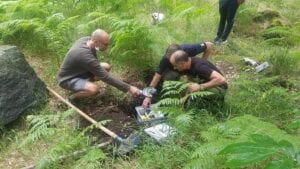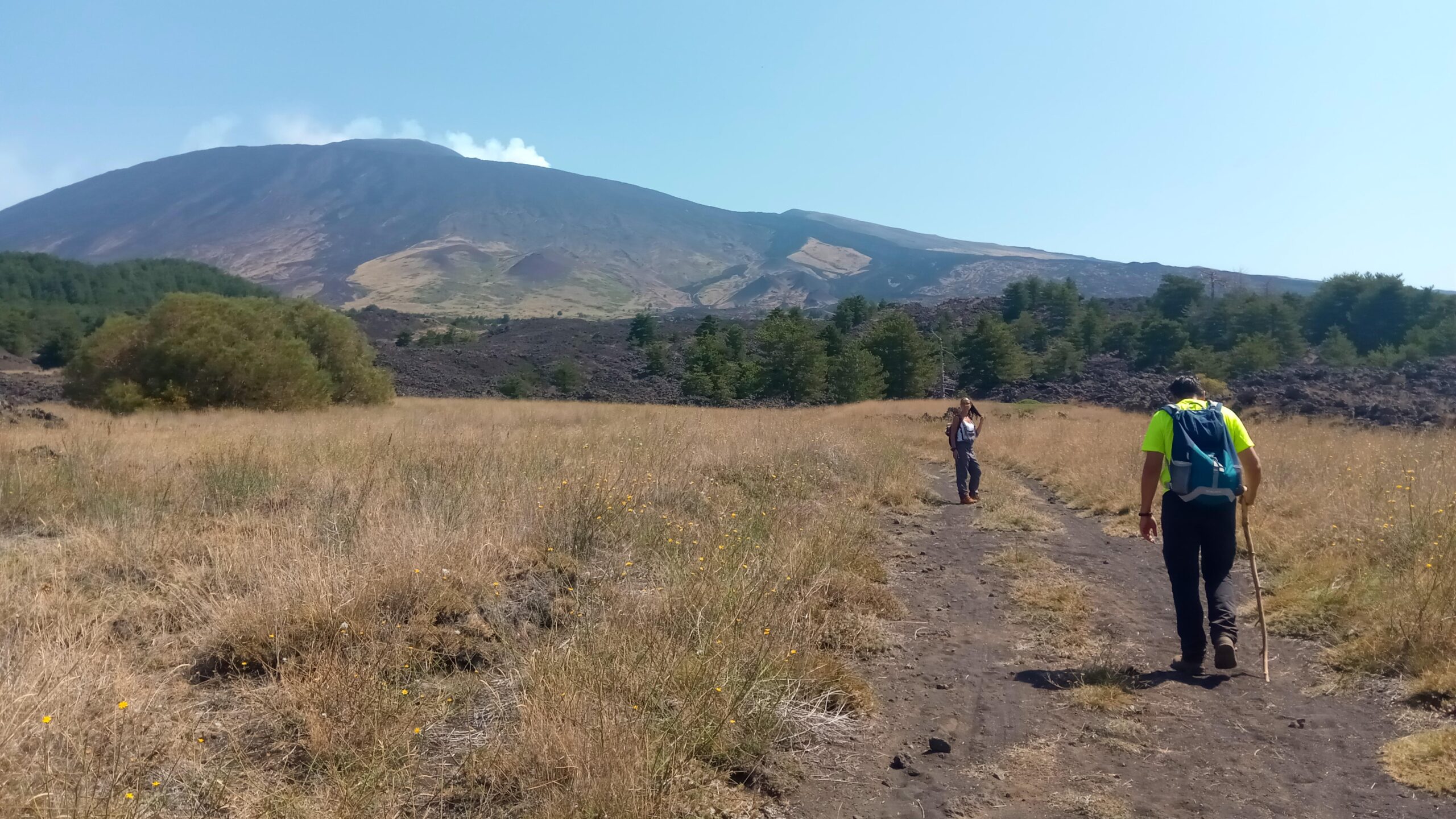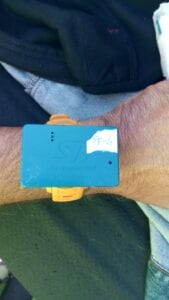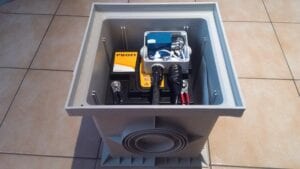To improve the accessibility of our content, please find the audio version of this blog post.
Sicily has become the site for a pioneering experiment that exploits a new “smart” technology to detect tremors, tectonic and volcanic activity in advance.
Thanks to Rosario Catania’s (STMicroelectronics process engineer) love for Etna and technology, and the invaluable support of INGV (National Institute of Geophysics and Volcanology) researcher, Alessandro Bonforte, experimentation using the SensorTile.Box for monitoring the volcanic activity of Etna has begun in the area known as the Pernicana belt.
Why Etna and the Pernicana belt?
Mount Etna is an active stratovolcano on the east coast of Sicily, between the cities of Messina and Catania. It lies above the convergent plate margin between the African Plate and the Eurasian Plate. It is the highest active volcano in Europe outside the Caucasus and the highest peak in Italy south of the Alps, with a current height of 3,326 m (10,912 ft), though this varies with summit eruptions. Etna covers an area of 1,190 km2 (459 sq mi) with a basal circumference of 140 km (87 miles). This makes it by far the largest of the three active volcanoes in Italy, being about two and a half times the height of Mount Vesuvius.
Mount Etna is one of the world’s most active volcanoes and is in an almost constant state of activity. The fertile volcanic soils support extensive agriculture, with vineyards and orchards spread around the lower slopes of the mountain and the broad Plain of Catania to the south. Due to its history of recent activity and nearby population, Mount Etna was designated a Decade Volcano by the United Nations. In June 2013, it was added to the list of UNESCO World Heritage Sites.
The Pernicana belt is an important area of Mount Etna because it is subject to a fault displacement of about 2 cm per year. Today, the discrepancy between the two sides of the fault is around 50 to 60 meters, and the shifts during the year cause frequent earthquakes. It is a perfect testing ground to evaluate the efficacy of new sensor technologies for monitoring this kind of activity with the resolution and accuracy required for research scientists.
STMicroelectronics’ major presence in Sicily and Catania provides further confirmation of the area as the most appropriate to monitor ground shifts and vibrations provoked by the volcano.
Rosario Catania and the starting point of the experiment
Rosario Catania is an STMicroelectronics Employee who lives in Sicily and spends much of his free time hiking, observing, and studying Mount Etna. Rosario Catania and Alessandro Bonforte are also part of the ERO (Etna Radio Observatory) group. «This group was conceived about ten years ago in Nicolosi (Sicily) – says Rosario – for the detection of natural radio signals coming from Mount Etna. When a friend and colleague, Alessandro Longo, developed an antenna for very low frequencies, I discovered the world of amateur radio and decided to obtain an amateur radio license and invest in a kit to detect the radio signals from the volcano. The antenna allows me to feel the “heartbeat” of the terrain, but only when the signal is not disturbed by all the anthropogenic interference».
Rosario is the Guinness World Record holder for the longest Nordic Walking marathon. He walked around the Sicilian territory and Mount Etna for 70 hours in a row, breaking the previous record of 68 hours.
Rosario’s love for Etna and his technological knowledge acquired over the years with STMicroelectronics inspired him to partner with Alessandro Bonforte to begin trials on Mount Etna to recognize, monitor, and study its movements. They found the SensorTile.Box to be an ideal instrument for detecting the parameters necessary to study the movements and vibrations of the volcano.
The Experiment
Rosario and Alessandro are looking for vibration, displacement, and acceleration data associated with the terrain near the volcano, which requires the use of microelectromechanical systems (MEMS) sensors like accelerometers and gyroscopes, as well as complex algorithms running on an internal microcontroller to analyze the information. Another important aspect of the experiment is the overall cost of the analytical setup. Professional equipment used to perform similar tasks can be extremely expensive and can certainly not be exposed to the risk of loss or damage, which is why they are never employed in areas such as the Pernicana belt.
The STEVAL-MKSBOX1V1, or SensorTile.box, by STMicroelectronics proved to be the perfect solution. This ready-to-use box kit with wireless IoT and wearable sensor platform is designed precisely to help developers build and deploy applications based on remote motion and environmental sensor data, even if they aren’t experts in sensor-based technologies.
 In addition to costing far less than conventional equipment used for the same purpose, the SensorTile.Box offers further advantages such as combining all the required smart sensors in a single product, with an integrated microcontroller able to process, interpolate, and export the data for further analysis. All of this greatly simplifies the task of acknowledging and analyzing recorded movement and vibration events. All of the devices in the SensorTile.Box are designed for low power consumption, and the system features clever power management logic to keep it dormant until appropriate events are detected, which means it can record activity for several weeks on a single car battery supply.
In addition to costing far less than conventional equipment used for the same purpose, the SensorTile.Box offers further advantages such as combining all the required smart sensors in a single product, with an integrated microcontroller able to process, interpolate, and export the data for further analysis. All of this greatly simplifies the task of acknowledging and analyzing recorded movement and vibration events. All of the devices in the SensorTile.Box are designed for low power consumption, and the system features clever power management logic to keep it dormant until appropriate events are detected, which means it can record activity for several weeks on a single car battery supply.
The experiment started on the 4th of August 2020. A SensorTile.Box configured as an inclinometer and another as a vibrometer, together with a car battery and connectors, were placed inside a watertight container and buried in an underground well situated in the Pernicana belt. The apparatus will continuously track all movement over the following months for up to a year in order to collect sufficient research data. During the first months, the SensorTile.Boxes will undergo frequent calibration in order to improve sensitivity and optimize battery and data consumption.
Future Activities
A SensorTile.Box has been installed on the southern side of the volcano at an altitude of 1500 meters, in parallel with a conventional system with nanometric sensors to be able to compare the accuracy and fine-tune the SensorTile.Box for maximum performance.
As Rosario Catania states: “The challenge is to understand whether these technologies can detect minute ground movements and therefore be used in areas of high seismic and volcanological risks, where conventional equipment can be difficult to use and generally are too expensive to sacrifice for experimental purposes.
A third SensorTile.Box will be installed by the end of the year in the Bronte Area, on the western slopes of Etna. If the first experiment is a success, the next step will involve deployment in more dangerous and active areas in order to collect even more data and develop a greater understanding of how to predict volcanic eruptions.



